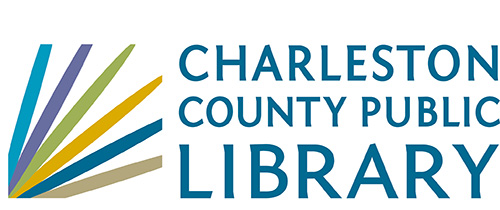Menu
×
Main Library
9 a.m. - 8 p.m.
Phone: (843) 805-6930
McClellanville Library
9 a.m. - 6 p.m.
Phone: (843) 887-3699
Folly Beach Library
9 a.m. - 5:30 p.m.
Phone: (843) 588-2001
Miss Jane's Building (Edisto Library Temporary Location)
9 a.m. - 4 p.m.
Phone: (843) 869-2355
West Ashley Library
9 a.m. - 7 p.m.
Phone: (843) 766-6635
John L. Dart Library
9 a.m. - 7 p.m.
Phone: (843) 722-7550
St. Paul's/Hollywood Library
9 a.m. - 8 p.m.
Phone: (843) 889-3300
Mt. Pleasant Library
9 a.m. – 8 p.m.
Phone: (843) 849-6161
Dorchester Road Library
9 a.m. - 8 p.m.
Phone: (843) 552-6466
Edgar Allan Poe/Sullivan's Island Library
9 p.m. - 6 p.m.
Phone: (843) 883-3914
John's Island Library
9 a.m. - 8 p.m.
Phone: (843) 559-1945
Wando Mount Pleasant Library
9 a.m. - 8 p.m.
Phone: (843) 805-6888
Otranto Road Library
9 a.m. - 8 p.m.
Phone: (843) 572-4094
Hurd/St. Andrews Library
9 a.m. - 8 p.m.
Phone: (843) 766-2546
Baxter-Patrick James Island
9 a.m. - 8 p.m.
Phone: (843) 795-6679
Bees Ferry West Ashley Library
9 p.m. - 8 p.m.
Phone: (843) 805-6892
Village Library
9 a.m. - 6 p.m.
Phone: (843) 884-9741
Keith Summey North Charleston Library
9 a.m. – 8 p.m.
Phone: (843) 744-2489
Mobile Library
9 a.m. - 5 p.m.
Phone: (843) 805-6909
Today's Hours
Main Library
9 a.m. - 8 p.m.
Phone: (843) 805-6930
McClellanville Library
9 a.m. - 6 p.m.
Phone: (843) 887-3699
Folly Beach Library
9 a.m. - 5:30 p.m.
Phone: (843) 588-2001
Miss Jane's Building (Edisto Library Temporary Location)
9 a.m. - 4 p.m.
Phone: (843) 869-2355
West Ashley Library
9 a.m. - 7 p.m.
Phone: (843) 766-6635
John L. Dart Library
9 a.m. - 7 p.m.
Phone: (843) 722-7550
St. Paul's/Hollywood Library
9 a.m. - 8 p.m.
Phone: (843) 889-3300
Mt. Pleasant Library
9 a.m. – 8 p.m.
Phone: (843) 849-6161
Dorchester Road Library
9 a.m. - 8 p.m.
Phone: (843) 552-6466
Edgar Allan Poe/Sullivan's Island Library
9 p.m. - 6 p.m.
Phone: (843) 883-3914
John's Island Library
9 a.m. - 8 p.m.
Phone: (843) 559-1945
Wando Mount Pleasant Library
9 a.m. - 8 p.m.
Phone: (843) 805-6888
Otranto Road Library
9 a.m. - 8 p.m.
Phone: (843) 572-4094
Hurd/St. Andrews Library
9 a.m. - 8 p.m.
Phone: (843) 766-2546
Baxter-Patrick James Island
9 a.m. - 8 p.m.
Phone: (843) 795-6679
Bees Ferry West Ashley Library
9 p.m. - 8 p.m.
Phone: (843) 805-6892
Village Library
9 a.m. - 6 p.m.
Phone: (843) 884-9741
Keith Summey North Charleston Library
9 a.m. – 8 p.m.
Phone: (843) 744-2489
Mobile Library
9 a.m. - 5 p.m.
Phone: (843) 805-6909
Patron Login
menu
Item request has been placed!
×
Item request cannot be made.
×
 Processing Request
Processing Request
Understanding the sexual recruitment of one of the oldest and largest organisms on Earth, the seagrass Posidonia oceanica.
Item request has been placed!
×
Item request cannot be made.
×
 Processing Request
Processing Request
- Author(s): Guerrero-Meseguer, Laura; Sanz-Lázaro, Carlos; Marín, Arnaldo
- Source:
PLoS ONE; 11/16/2018, Vol. 13 Issue 11, p1-20, 20p- Subject Terms:
- Source:
- Additional Information
- Abstract: The seagrass Posidonia oceanica is considered one of the oldest and largest living organisms on Earth. Notwithstanding, given the difficulty of monitoring its fruits and seeds in the field, the development of P. oceanica during its sexual recruitment is not completely understood. We studied the stages of development of P. oceanica seeds from their dispersion in the fruit interior to their settlement in sediment through histological, ultrastructural and mesocosm experiments. P. oceanica sexual recruitment can be divided into three main stages that focus on maximising photosynthesis and anchoring the seedlings to the sediment. In the first stage (fruit dispersion), seeds perform photosynthesis while being transported inside the fruit along the sea surface. In the second stage (seed adhesion), seeds develop adhesive microscopic hairs that cover the primary and secondary roots and favour seed adhesion to the substrate. In the last stage (seedling anchorage), roots attach the seedlings to the substrate by orienting them towards the direction of light to maximise photosynthesis. The adaptations observed in P. oceanica are similar to those in other seagrasses with non-dormant seeds and fruits with membranous pericarps, such as Thalassia sp. and Enhalus sp. These common strategies suggest a convergent evolution in such seagrasses in terms of sexual recruitment. Understanding the sexual recruitment of habitat-forming species such as seagrasses is necessary to adequately manage the ecosystems that they inhabit. [ABSTRACT FROM AUTHOR]
- Abstract: Copyright of PLoS ONE is the property of Public Library of Science and its content may not be copied or emailed to multiple sites or posted to a listserv without the copyright holder's express written permission. However, users may print, download, or email articles for individual use. This abstract may be abridged. No warranty is given about the accuracy of the copy. Users should refer to the original published version of the material for the full abstract. (Copyright applies to all Abstracts.)
- Abstract:
Contact CCPL
Copyright 2022 Charleston County Public Library Powered By EBSCO Stacks 3.3.0 [350.3] | Staff Login


No Comments.